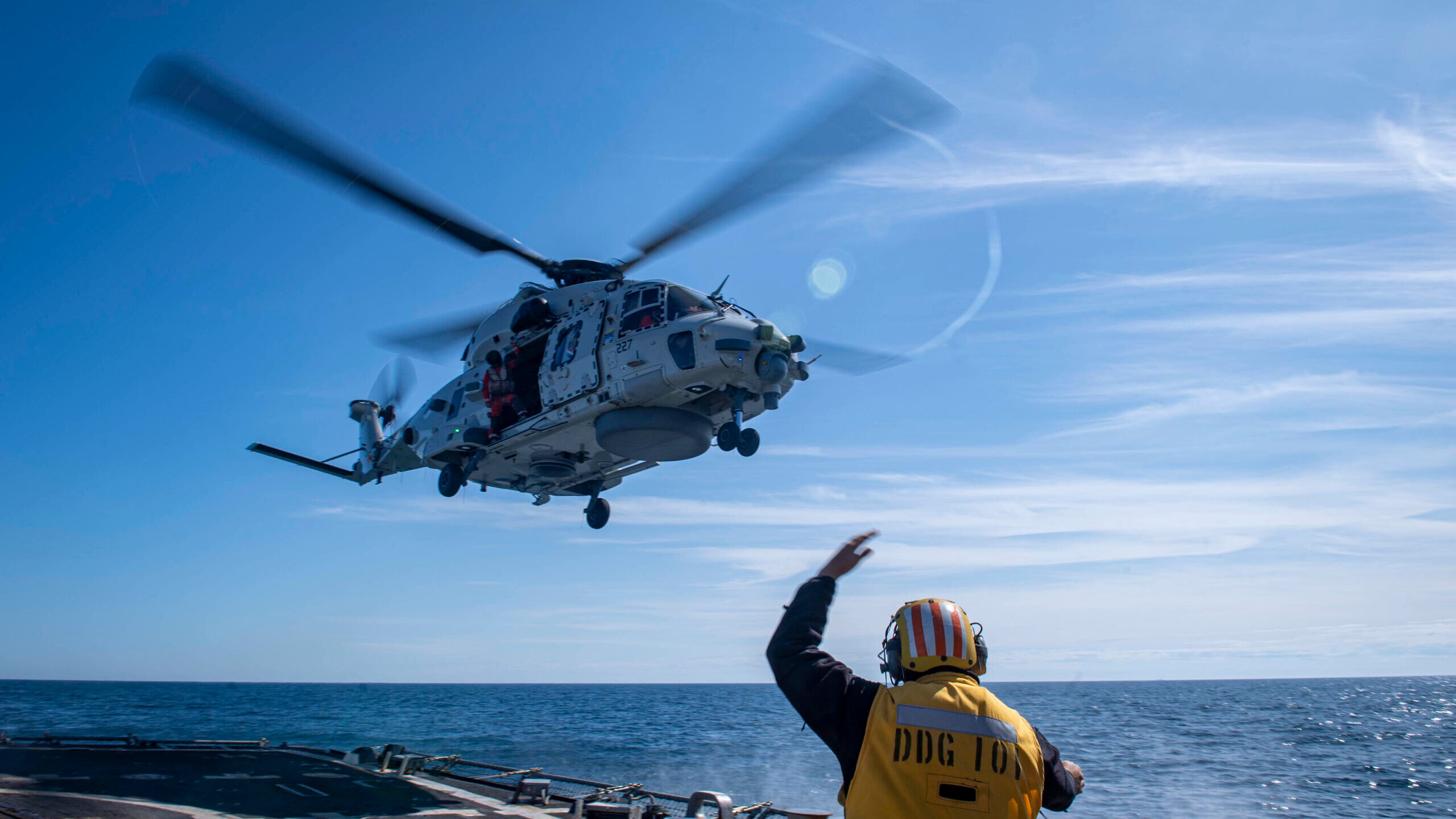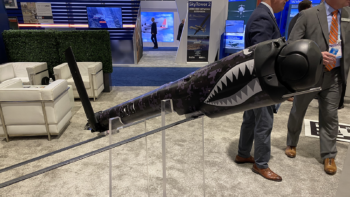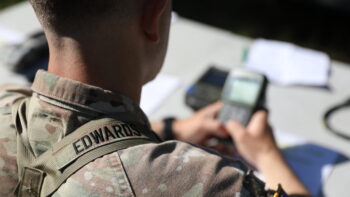
An NH90 helicopter from the Royal Netherlands navy frigate HNLMS Van Speijk (F 828) takes off from the flight deck of the guided-missile destroyer USS Gridley (DDG 101) after Royal Canadian Navy leadership met with leadership of Standing NATO Maritime Group One. (US Navy/ Cameron Stoner)
Updated 11/3/2022 at 7:37 pm ET with comment from Airbus
DUBLIN — Sweden’s top military officer announced Nov. 1 that the country was cancelling its agreement to purchase NH90 maritime helicopters, following problems with availability of the NHIndustries-produced rotorcraft.
The decision, taken by Gen. Micael Byden, Supreme Commander of the Swedish Armed Forces, was announced as part of newly issued defense modernization and procurement guidance. But it did not come out of nowhere — senior Swedish Air Force figures, citing poor availability rates, have been openly floating the idea of cancelling the agreement for the NH90s for several months.
Byden’s plan, subject to government approval, puts the country in line with its future-NATO ally Norway, which similarly ended its contract with the manufacturer — a collaboration between Airbus, Leonardo and GKN Aerospace/Fokker Technologies — for 14 NH90 aircraft on June 10. Norway said at the time that it would return aircraft already delivered and seek compensation to the value of almost 5 billion kroner ($525 million).
“NHI acknowledges the latest study issued by the Swedish armed forces regarding the future of its military capability and subsequently its recommendation to rationalise its future helicopter fleet with a reduced number of platforms (including the phasing out of their current NH90 fleet),’ said a Airbus spokesperson in a statement.
“The Swedish NH90’s have been specifically customized to the Swedish armed forces’ needs, providing the country with unique and outstanding mission capabilities. Although the Swedish NH90s have achieved availability rates above the average of similar helicopter types, particularly for the naval version, the size of the available fleet was temporarily reduced over the last years due to the retrofit and upgrade programme, agreed with the Swedish armed forces, that has been ongoing since 2017 and that is planned to be completed by the end of 2023.”
During the “last few months” Airbus also proposed to Sweden “additional measures” to increase NH90 fleet availability and reduce operating costs, according to the spokesperson.
Facing a possible ASW rotary capability gap, Stockholm could see fit to move quickly with a NH90 replacement program, as it vows to deter Russian submarine activity in the High North. However, source selection of a new helicopter to replace the 18 NH90 TTH fleet was not specifically mentioned by Byden, suggesting a tender process or discussions with industry will follow in due course.
That said, interest from Stockholm in Sikorsky’s MH-60R Romeo maritime type has been clear for some time, meaning the US helicopter is likely among those being considered as a replacement. Byden also confirmed Sweden will acquire “additional” UH-60M Black Hawk utility helicopters and provided a concise rundown of how the Swedish Armed Forces will move forward with other procurements.
Other Key Investments Coming
Byden’s NH90 decision was just one part of the modernization guidance issued by Sweden’s military. In comments released as part of that document, as well as follow-on appearences, Byden made it clear he is looking across the board at Sweden’s capabilities.
“The navy is proposed to be strengthened through increased surface combat capability and continued turnover of systems and ships,” he said in a longer statement published by the Swedish Armed Forces. “The ground forces are proposed to be supplied with long-range combat systems and more unmanned systems.”
He also confirmed that “the national ability to launch satellites will be developed,” without further elaboration.
In line with Sweden opting to become a NATO member, Byden recommended that Nordic countries fall under an identical “management structure” and defend a joint “operational area” going forward.
“Membership [of NATO] means that certain measures need to be started immediately, for example an integrated air and robotic defense, interoperable command systems and development of host country support,” he added.
Byden later committed Sweden to meeting the 2% NATO defense spending target by 2026, during a Nov. 1 news conference, an event where he also revealed that the anticipated conscription level of 24,000 personnel in 2025 will rise to 50,000 by 2035, according to Reuters.
It also reported that he recommended the Swedish government not introduce any red lines before entering NATO, such as blocking nuclear weapons from being transferred to Swedish territories.
One effort that seems sure to continue is Stockholm’s support for Ukraine. Sweden’s new center-right government arrived to power on Sept. 11 and immediately declared full support for Ukraine against Russia’s illegal invasion of its neighbor, including the transfer of weapons. The previous government signed off on a SEK 500 million ($45.2 million) support package on July 1 which included anti-tank weapons, infantry support weapons and mine clearance equipment.
Sweden’s industry is certainly watching to see where the Ukraine situation goes.
“Before the war, the Swedish government, like other governments across Europe, was hesitant to provide military materials to countries in an armed conflict but that has definitely changed now,” Carl Foucard, Vice President for sales at Swedish UAV manufacturer UMS Skeldar, told Breaking Defense. “We are of course very positive and looking into opportunities so we can supply our systems to Ukraine.”
Lockheed, Howmet settle lawsuit over F-35 titanium (EXCLUSIVE)
Lockheed Martin alleged in court filings that Howmet cut off the supply of titanium after the aerospace giant refused to agree to higher prices, threatening production of the F-35.



























